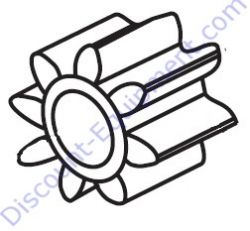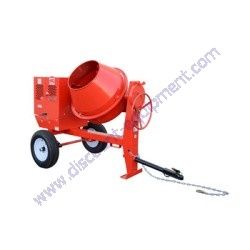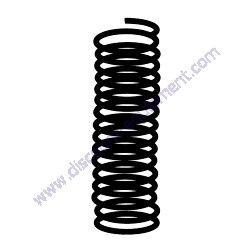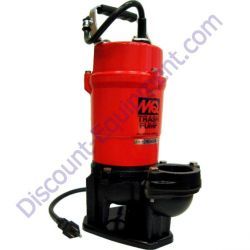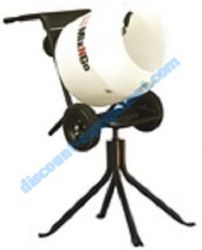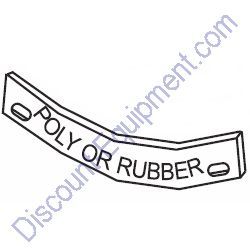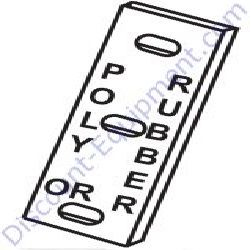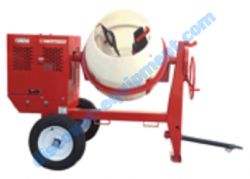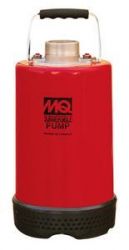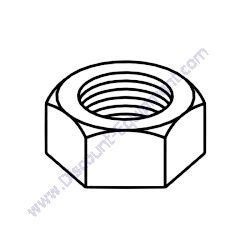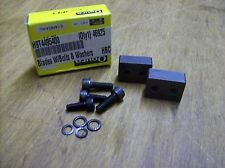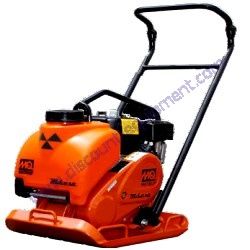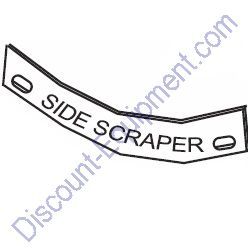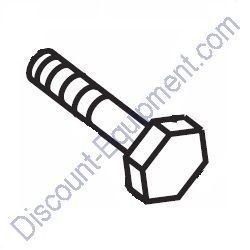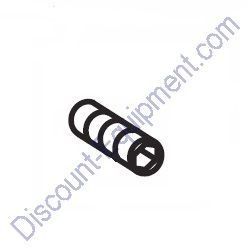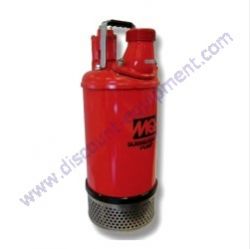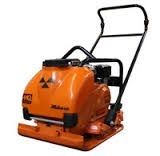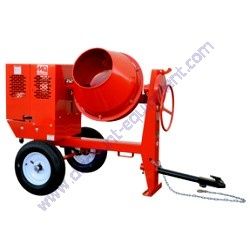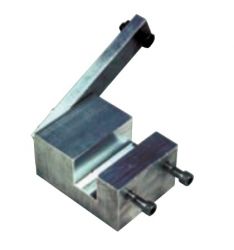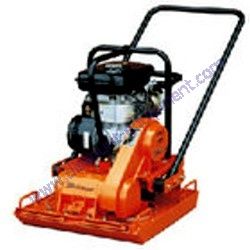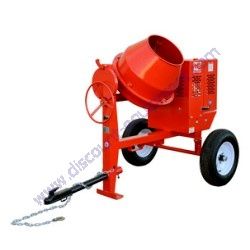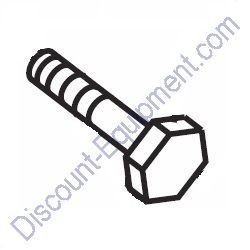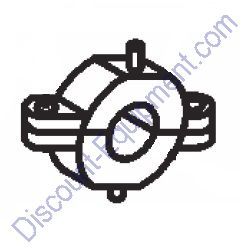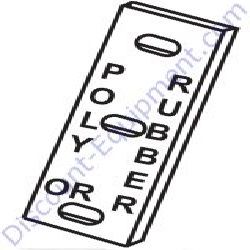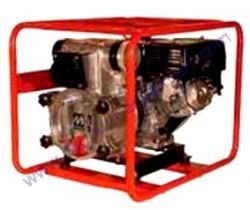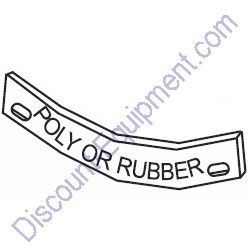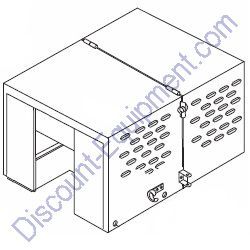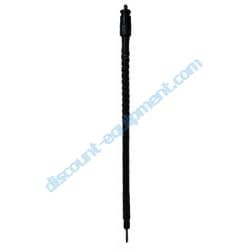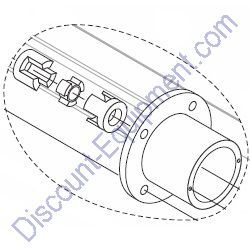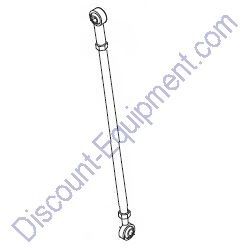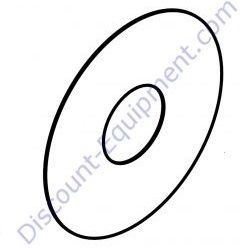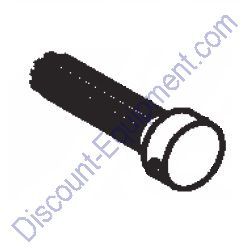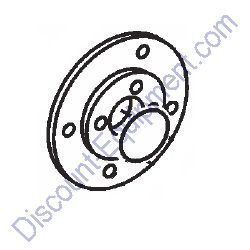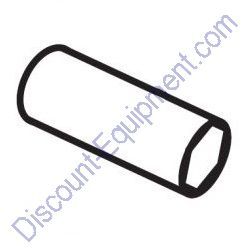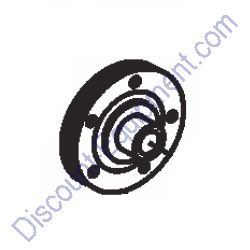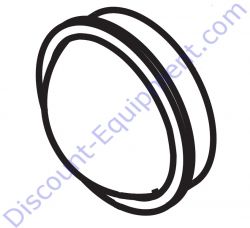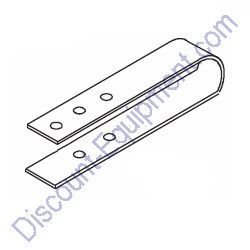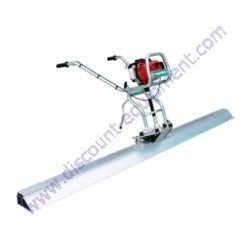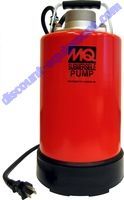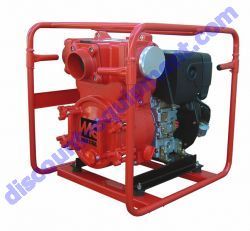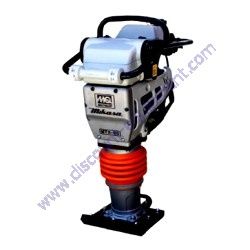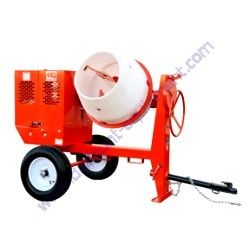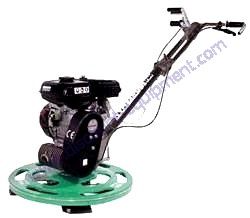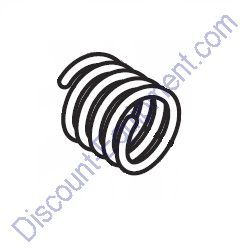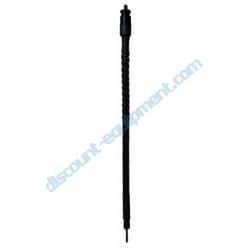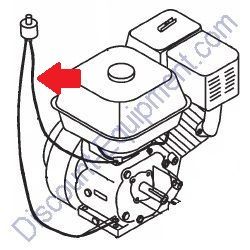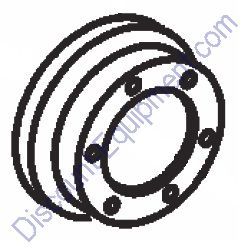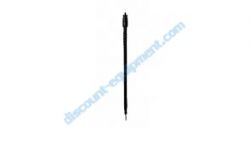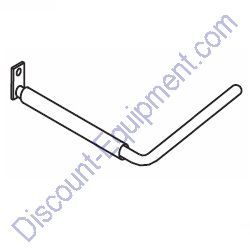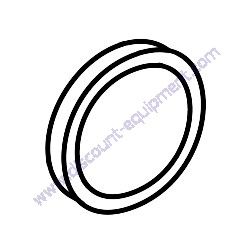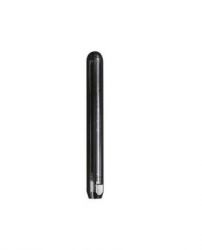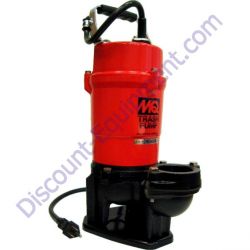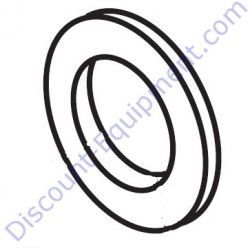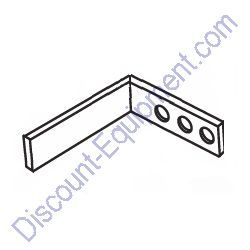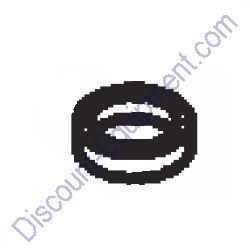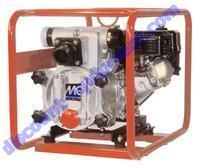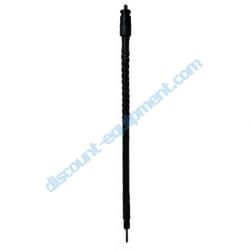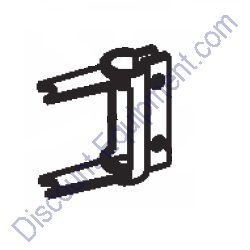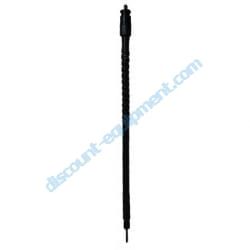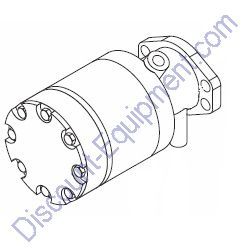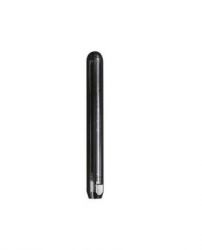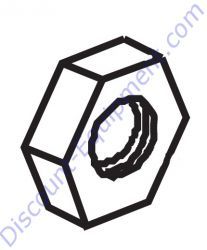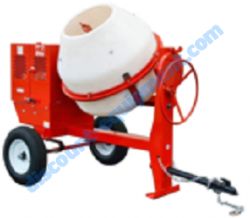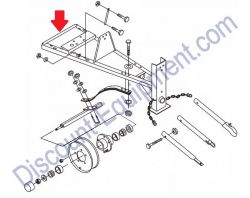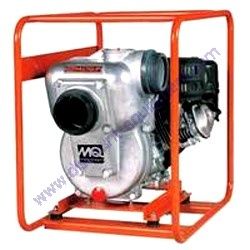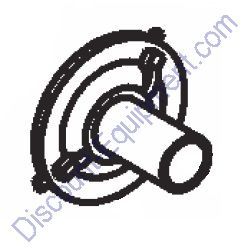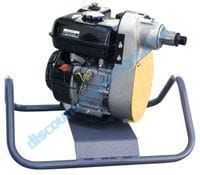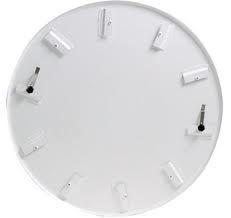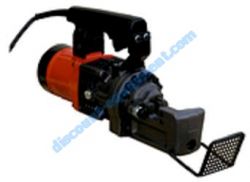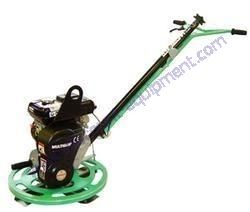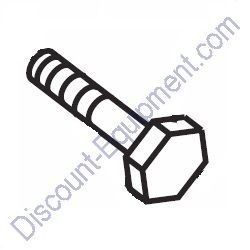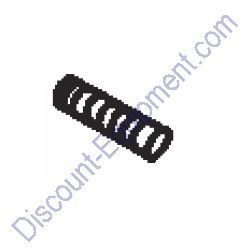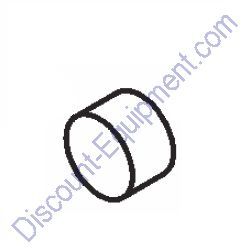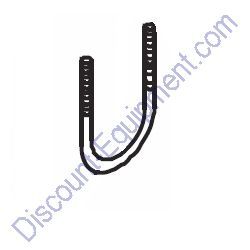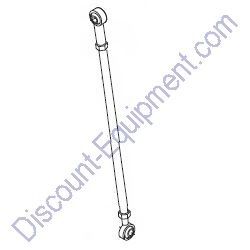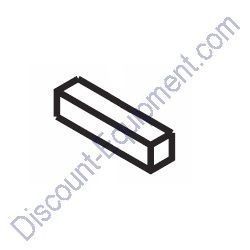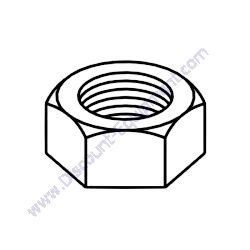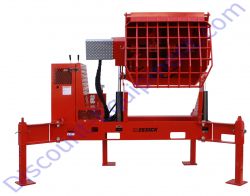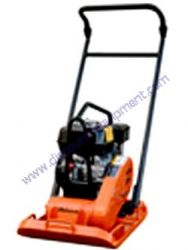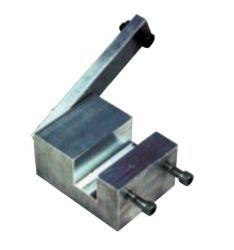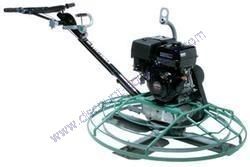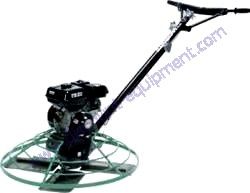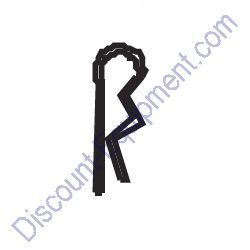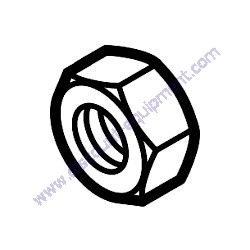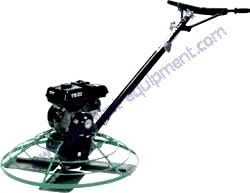Multiquip GBX12SK GBug Light Tower Mounted on Towable Trailer, 4-Spot, 1200W LED Projection
Safety Information
Multiquip GBX12SK GloBug Light Tower Mounted on Towable Trailer
SAFETY INFORMATION
Do not operate or service the equipment before reading the entire manual. Safety precautions should be followed at all times when operating this equipment. Failure to read and understand the safety messages and operating instructions
could result in injury to yourself and others.
SAFETY MESSAGES
The four safety messages shown below will inform you about potential hazards that could injure you or others. The safety messages specifically address the level of exposure to the operator and are preceded by one of four words:
DANGER, WARNING, CAUTION or NOTICE.
SAFETY SYMBOLS
DANGER
Indicates a hazardous situation which, if not avoided, WILL result in DEATH or SERIOUS INJURY.
WARNING
Indicates a hazardous situation which, if not avoided, COULD result in DEATH or SERIOUS INJURY.
CAUTION
Indicates a hazardous situation which, if not avoided, COULD result in MINOR or MODERATE INJURY.
NOTICE
Addresses practices not related to personal injury.
SAFETY SYMBOLS
Potential hazards associated with the operation of this equipment will be referenced with hazard symbols which may appear throughout this manual in conjunction with safety messages.
GENERAL SAFETY
CAUTION
NEVER operate this equipment without proper protective clothing, shatterproof glasses, respiratory protection, hearing protection, steel-toed boots and other protective devices required by the job or city and state regulations.
NEVER operate this equipment when not feeling well due to fatigue, illness or when under medication.
NEVER operate this equipment under the influence of drugs or alcohol.
ALWAYS check the equipment for loosened threads or
bolts before starting.
DO NOT use the equipment for any purpose other than its intended purposes or applications.
NOTICE
This equipment should only be operated by trained and qualified personnel 18 years of age and older
Whenever necessary, replace nameplate, operation and safety decals when they become difficult read.
Manufacturer does not assume responsibility for any accident due to equipment modifications. Unauthorized equipment modification will void all warranties.
NEVER use accessories or attachments that are not recommended by Multiquip for this equipment. Damage to the equipment and/or injury to user may result.
ALWAYS know the location of the nearest fire extinguisher.
ALWAYS know the location of the nearest first aid kit.
ALWAYS know the location of the nearest phone or keep a phone on the job site. Also, know the phone numbers of the nearest ambulance, doctor and fire department. This information will be invaluable in the case of an emergency
LIGHT CART SAFETY
DANGER
NEVER operate the equipment in an explosive atmosphere or near combustible materials. An explosion or fire could result causing severe bodily harm or even death.
WARNING
NEVER disconnect any emergency or safety devices. These devices are intended for operator safety.
Disconnection of these devices can cause severe injury, bodily harm or even death. Disconnection of any of these devices will void all warranties.
CAUTION
NEVER lubricate components or attempt service on a running machine.
ALWAYS ensure light cart is on level ground before use so that it cannot slide or shift around, endangering workers.
Always keep immediate area free of bystanders.
ALWAYS make sure trailer is leveled with all outriggers extended before raising tower. Outriggers must remain extended while tower is up..
ALWAYS keep area behind cart clear of people while raising and lowering mast.
NEVER remove safety pin or pull mast locking pin while tower is in a raised position!
CHECK the mast and winch cable for wear. If any problem occurs when lowering or raising the tower, STOP immediately! Contact a trained technician for assistance.
NEVER pivot or retract mast while unit is operating.
NEVER use the light tower mast as a crane. DO NOT lift anything with the mast
ALWAYS lower the mast when not in use, or if high winds or electrical storms are expected.
NOTICE
ALWAYS keep the immediate area surrounding the light cart clean, neat, and free of debris.
ALWAYS keep the machine in proper running condition.
Fix damage to machine and replace any broken parts immediately.
ALWAYS store equipment properly when it is not being used. Equipment should be stored in a clean, dry location out of the reach of children and unauthorized personnel.
To prevent the light tower from overturning, NEVER use in winds that exceed 45 MPH (72 km/h).
NOTICE
LAMP SAFETY
WARNING
NEVER attempt to replace lamp with the power on.
Always shut down the engine when changing the lamp.
CAUTION
NEVER use force when installing the lamp. Excessive force could cause the lamp to break, causing bodily harm.
NOTICE
NEVER leave any grease or oil residue on lamp surface when replacing or removing lamp. This can create hot spots, reducing the service life of the lamp.
ALWAYS make sure lamp surface is clean and dry.
ALWAYS replace with MQ recommended type lamp.
ALWAYS have a trained technician install and remove a lamp, or replace any damaged fixture wiring
ENGINE SAFETY
DANGER
The engine fuel exhaust gases contain poisonous carbon monoxide. This gas is colorless and odorless, and can cause death if inhaled.
The engine of this equipment requires an adequate free flow of cooling air. NEVER operate this equipment in any enclosed or narrow area where free flow of the air is restricted. If the air flow is restricted it will cause injury to people and property and serious damage to the equipment or engine.
WARNING
DO NOT place hands or fingers inside engine compartment when engine is running.
NEVER operate the engine with heat shields or guards removed.
Keep fingers, hands hair and clothing away from all moving parts to prevent injury.
DO NOT remove the radiator cap while the engine is hot.
High pressure boiling water will gush out of the radiator and severely scald any persons in the general area of the generator.
DO NOT remove the coolant drain plug while the engine is hot. Hot coolant will
gush out of the coolant tank and severely scald any persons in the general area of the generator.
DO NOT remove the engine oil drain plug while the engine is hot. Hot oil will gush out of the oil tank and severely scald any persons in the general area of the generator.
CAUTION
NEVER touch the hot exhaust manifold, muffler or cylinder. Allow these parts to cool before servicing equipment.
NOTICE
NEVER run engine without an air filter or with a dirty air filter. Severe engine damage may occur. Service air filter frequently to prevent engine malfunction.
NEVER tamper with the factory settings of the engine or engine governor. Damage
to the engine or equipment can result if operating in speed ranges above the
maximum allowable.
NEVER tip the engine to extreme angles during lifting as it may cause oil to gravitate into the cylinder head, making the engine start difficult.
Wet stacking is a common problem with diesel engines which are operated for extended periods with light or no load applied. When a diesel engine operates without sufficient load (less than 40% of the rated output), it will not operate at its optimum temperature. This will allow unburned fuel to accumulate in the exhaust system, which can foul the fuel injectors, engine valves and exhaust system, including turbochargers, and reduce the operating performance.
In order for a diesel engine to operate at peak efficiency, it must be able to provide fuel and air in the proper ratio and at a high enough engine temperature for the engine to completely burn all of the fuel.
Wet stacking does not usually cause any permanent damage and can be alleviated if additional load is applied to relieve the condition. It can reduce the system
performance and increase maintenance. Applying an increasing load over a period of time until the excess fuel is burned off and the system capacity is reached
usually can repair the condition. This can take several hours to burn off the accumulated unburned fuel.
State Health Safety Codes and Public Resources Codes specify that in certain locations, spark arresters must be used on internal combustion engines that use
hydrocarbon fuels. A spark arrester is a device designed to prevent accidental discharge of sparks or flames from the engine exhaust. Spark arresters are qualified and rated by the United States Forest Service for this purpose. In order to comply with local laws regarding spark arresters, consult the engine distributor or the local Health and Safety Administrator.
FUEL SAFETY
DANGER
DO NOT start the engine near spilled fuel or combustible fluids. Gasoline is extremely flammable and its vapors can cause an explosion if ignited.
ALWAYS refuel in a well-ventilated area, away from sparks and open flames.
ALWAYS use extreme caution when working with flammable liquids.
DO NOT fill the fuel tank while the engine is running or hot.
DO NOT overfill tank, since spilled fuel could ignite if it comes into contact with hot engine parts or sparks from the ignition system.
Store fuel in appropriate containers, in well-ventilated areas and away from sparks and flames.
NEVER use fuel as a cleaning agent.
DO NOT smoke around or near the equipment. Fire or explosion could result
from fuel vapors or if fuel is spilled on a hot engine.
TOWING SAFETY — LIGHT TOWER
CAUTION
Check with your local county or state safety towing regulations, in addition to meeting Department of Transportation (DOT) Safety Towing Regulations, before towing your light tower.
In order to reduce the possibility of an accident while transporting the light tower on public roads, ALWAYS make sure the trailer that supports the light tower and the towing vehicle are mechanically sound and in good operating condition.
ALWAYS shutdown engine before transporting.
Make sure the hitch and coupling of the towing vehicle are rated equal to, or greater than the trailer “gross vehicle weight rating.”
ALWAYS inspect the hitch and coupling for wear. NEVER tow a trailer with defective hitches, couplings, chains, etc.
Check the tire air pressure on both towing vehicle and trailer. Trailer tires should be inflated to 50 psi cold.
Also check the tire tread wear on both vehicles
ALWAYS make sure the trailer is equipped with a safety chain.
ALWAYS properly attach trailer’s safety chains to towing vehicle.
ALWAYS make sure the vehicle and trailer directional, backup, brake and trailer lights are connected and working properly.
DOT Requirements include the following:
• Connect and test electric brake operation.
• Secure portable power cables in cable tray with tie wraps.
The maximum speed for highway towing is 55 MPH (86 km/h) unless posted otherwise. Recommended off road towing is not to exceed 15 MPH (24 km/h)or less depending on type of terrain.
Avoid sudden stops and starts. This can cause skidding, or jack-knifing. Smooth, gradual starts and stops will improve towing.
Avoid sharp turns to prevent rolling.
Trailer should be adjusted to a level position at all times when towing.
Raise and lock trailer jack stands in up position when towing.
TRANSPORTING SAFETY
CAUTION
Before lifting, make sure that light cart parts are not damaged and screws are not loosened or lost.
ALWAYS make sure lifting device has been properly secured to lifting hook of the equipment.
NEVER lift the equipment while engine is running.
Use adequate lifting cable (wire or rope) of sufficient strength.
Use suspension hooks and lift straight upwards.
If lifting through pockets, make sure forks of forklift are inserted in pockets as far as possible before lifting.
Place chock blocks underneath wheel to prevent rolling while parked.
Place support blocks underneath the trailer’s bumper to prevent tipping while parked.
Use the trailer’s swivel jack to adjust the trailer height to a level position while parked.
NEVER allow any person or animal to stand underneath the equipment while lifting.
DO NOT lift equipment to unnecessary heights.
Loading and Tie-Down on Flatbed Truck
NOTICE
When loading onto flatbed truck, make sure that front jackstand of light tower is retracted and in the horizontal position so that the foot does not make contact with the deck floor.
Make sure that the two side (left and right) and two rear jackstands are in the vertical position, slightly extended, so that each foot makes contact with the deck floor.
Straps and chains should be routed through the transport tie-down points located beneath each corner of the cabinet to allow even application of force to the front and rear of the machine.
DO NOT secure the unit by running a strap or chain over the tongue of the light tower. This may cause severe damage to the unit.
ELECTRICAL SAFETY
DANGER
The electrical voltage required to operate the generator can cause severe injury or even death through physical contact with live circuits. Turn generator OFF before performing maintenance on the generator.
NEVER insert any objects into the output receptacles during operation. This is
extremely dangerous. The possibility exists of electrical shock, electrocution or
death.
NEVER operate light cart or handle any electrical equipment while standing in
water, while barefoot, while hands are wet or in the rain.
A dangerous electrical shock could occur, causing severe bodily harm or
even death.
ALWAYS make sure the area above the light cart is open and clear of overhead
power lines and other obstructions. The tower extends in excess of 11
feet (3.5 meters). Contact with overhead power lines or other obstructions
could result in equipment damage, electrical shock, electrocution and even
death.
Similar to boom equipment, light cart may become energized with high voltage. DO NOT operate the light cart within a radial distance of 17 feet (5.1 meters) from high voltage power lines. If light cart becomes energized with high voltage, contact with the equipment could result in electrocution.
NEVER operate the light cart in winds in excess of 45 MPH (72 KPH).
NEVER operate GBX24B light tower in winds in excess of 34 MPH.
Backfeed to a utility system can cause electrocution and/or property damage. NEVER connect the generator to a building’s electrical system without a transfer switch or other approved device. All installations should be performed by a licensed electrician in accordance with all applicable laws and electrical codes.
Failure to do so could result in electrical shock or burn, causing serious injury
or even death.
Power Cord/Cable Safety
DANGER
NEVER let power cords or cables lay in water.
NEVER use damaged or worn cables or cords when connecting equipment to generator. Inspect for cuts in the insulation.
NEVER grab or touch a live power cord or cable with wet hands. The
possibility exists of electrical shock, electrocution or death.
Make sure power cables are securely connected. Incorrect connections may cause electrical shock and damage to the light cart.
Grounding Safety
DANGER
The light cart is equipped with a ground terminal for your protection. ALWAYS complete the grounding path from the light cart to an external grounding source.
ALWAYS make sure that electrical circuits are properly grounded to a suitable earth ground (ground rod) per the National Electrical Code (NEC) and local codes
before operating generator. Severe injury or death by electrocution can result from operating an ungrounded generator.
NEVER use gas piping as an electrical ground.
BATTERY SAFETY
DANGER
DO NOT drop the battery. There is a possibility that the battery will explode.
DO NOT expose the battery to open flames, sparks, cigarettes, etc. The battery contains combustible gases and liquids. If these gases and liquids come into contact with a flame or spark, an explosion could occur.
WARNING
ALWAYS wear safety glasses when handling the battery to avoid eye irritation. The battery contains acids that can cause injury to the eyes and skin.
Use well-insulated gloves when picking up the battery.
ALWAYS keep the battery charged. If the battery is not charged, combustible gas will build up.
ALWAYS recharge the battery in a well-ventilated environment to avoid the risk of a dangerous concentration of combustible gasses.
If the battery liquid (dilute sulfuric acid) comes into contact with clothing or skin, rinse skin or clothing immediately with plenty of water.
If the battery liquid (dilute sulfuric acid) comes into contact with eyes, rinse eyes immediately with plenty of water and contact the nearest doctor or hospital to seek medical attention.
CAUTION
ALWAYS disconnect the NEGATIVE battery terminal before performing service on the generator.
ALWAYS keep battery cables in good working condition. Repair or replace all worn cables
ENVIRONMENTAL SAFETY
NOTICE
Dispose of hazardous waste properly. Examples of potentially hazardous waste
are used motor oil, fuel and fuel filters.
DO NOT use food or plastic containers to dispose of hazardous waste.
DO NOT pour waste, oil or fuel directly onto the ground, down a drain or into any water source. |

